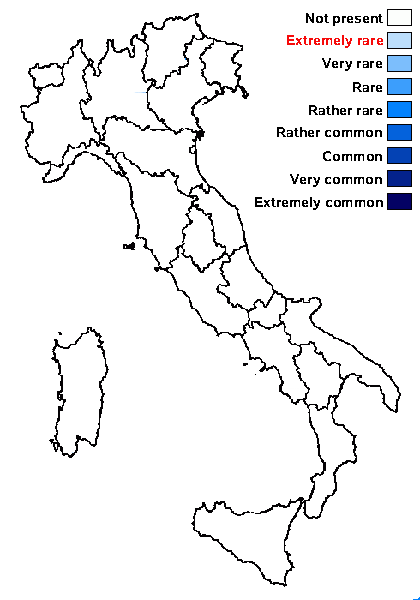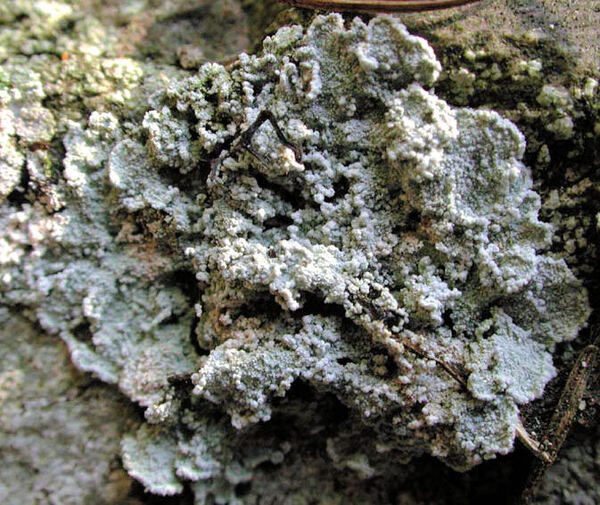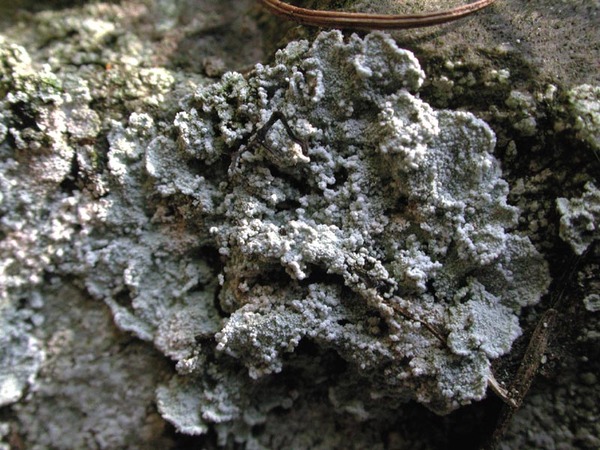Lepraria bergensis Tønsberg
Graphis Scripta, 13, 2: 47, 2002.
Synonyms:
Distribution:
Description: Thallus leprose, pale grey to pale bluish grey, entirely consisting in a mass of granules, usually well-delimited at least when young, often with an irregularly raised, sublobate margin. Granules rather firmly attached, coarse, 90-160 μm in diam., the surface with a soft appearance, without or with very short (to 20 µm long) projecting hyphae. Medulla more or less developed, the lower part with numerous, pale orange-brown to dark brown rhizohyphae forming a more or less distinct hypothallus. Photobiont chlorococcoid. Spot tests; upper surface K+ yellow, C-, KC-, P+ yellowish, UV-; lower part of medulla and hypothallus K+ purple-red. Chemistry: thallus with atranorin, rangiformic acid (major), norrangiformic and jackinic acids (traces); medulla with anthraquinones. Note: an apparently rare species described from Norway, growing on rock and silicicolous mosses in rather rain-shetered, but humid situations. Ther species was recently reported from the mountains of Corsica (Gonnet & al. 2025) and should be looked for in Italy.
Growth form: Leprose
Substrata: rocks, soil, terricolous mosses, and plant debris
Photobiont: green algae other than Trentepohlia
Reproductive strategy: mainly asexual, by soredia, or soredia-like structures (e.g. blastidia)
In underhangs rarely wetted by rain

Predictive model
Growth form: Leprose
Substrata: rocks, soil, terricolous mosses, and plant debris
Photobiont: green algae other than Trentepohlia
Reproductive strategy: mainly asexual, by soredia, or soredia-like structures (e.g. blastidia)
In underhangs rarely wetted by rain

Predictive model



